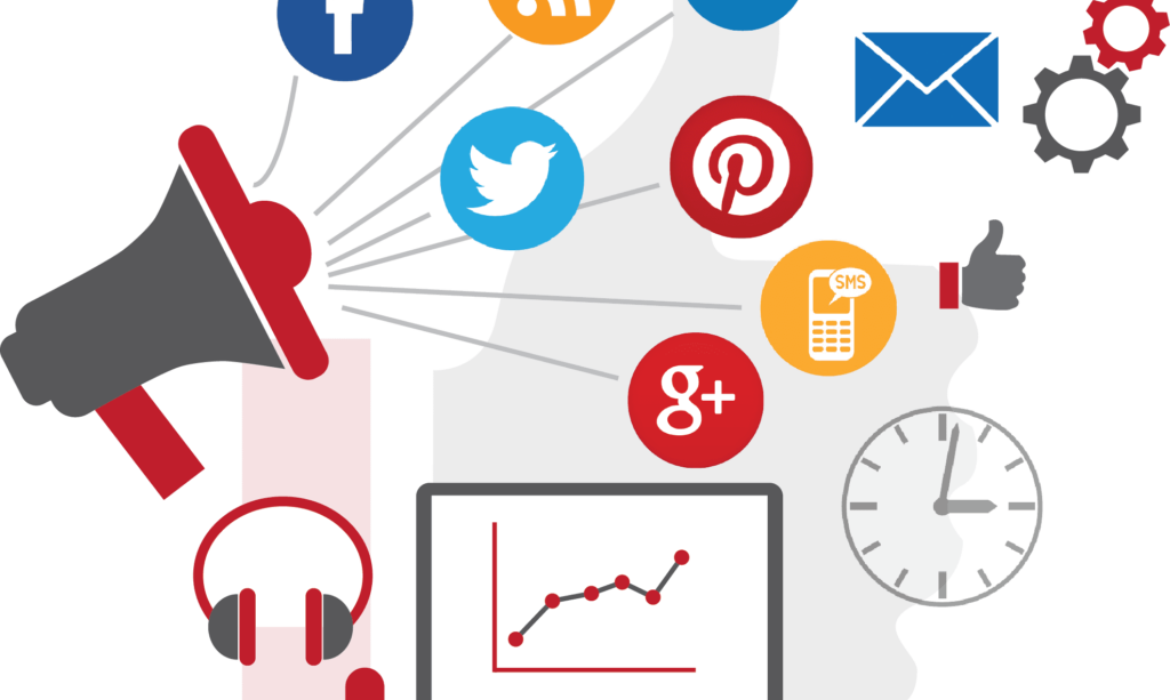Is Marketing Automation Reserved for Corporates only?
What is Marketing Automation?
Marketing is a continuous ongoing process that can be very demanding if every single step of the process is done manually. Modern technology allows you to streamline and automate some steps of this process to make it faster and better. Marketing Automation allows you to reach out to a wider range of audiences that if done manually, just wouldn’t be possible.
Marketing Automation for SMB’s
Marketing Automation is often associated only with big companies, although that may be the assumption the reality is far from it. Marketing Automation helps small businesses just as much, if not more than corporates!
It gives small businesses the ability to scale quicker, reaching out to as many people as possible and as efficiently as possible. Ultimately, leading to more leads and sales.
Although it may be intimidating for a small business to start with, it is definitely worth setting up, given that the result will lead to more business for them.
Benefits of Marketing Automation
- Increases efficiency
- Helps make marketing more personalized
- Increases scalability
Types of Marketing Automation
Email Marketing
According to Litmus, on average email marketing campaigns deliver an impressive ROI of $36 for every $1 spent. That is an incredible ROI of 3600%
Email Marketing automation enables you to send out customized emails to a large audience that if done manually would take a lot of time. It also lets you re-engage with customers that have already interacted with your business before
A few useful email marketing tools are –
- MailChimp
- Reply
- Hubspot
Social Media Marketing Automation
Social media marketing automation is the process of reducing the work done manually in managing social media accounts and engaging an automation software with it. You can automate post scheduling, get your social media analytics and even a basic level of customer service can also be automated on social media.
A few useful social media automation tools are –
- Hootsuite
- Buffer
- SocialBee
Marketing Analytics Automation
At any given point of time a company runs various marketing campaigns simultaneously. Tracking the performance of each and every campaign and how it is working for you can be difficult. You may have the data with you, but organizing and arranging that data into figures that are easy to understand is a tedious task. That is where Marketing Analytics Automation comes in. These tools help you collect and arrange your campaign in easy and understandable formats so you can know what’s working and what’s not for you.
A few Marketing Analytics Automation tools –
- Funnel.io
- Google Analytics 360
- Adobe Analytics
Lead Management Automation
Lead generation is always a priority task for any marketer. Leads are what give business to your company. Therefore, managing the leads that you have is equally important. The actual task here is to identify the quality of a lead and direct it to the appropriate place inside the sales funnel. Once the lead automation process is set, the lead nurturing process becomes a lot easier.
A few Lead Management Automation tools –
- Hubspot
- ClickUp
- Pipedrive
Investing in a good marketing automation system will not only make a marketers’ life easier, but also streamline the process in a way where you’d be able to make more impact and increase growth.
Digital Marketing Trends to Keep an Eye on in 2024
Digital Marketing has been a very fast paced field ever since it came to be. To keep yourself updated with everything around Digital Marketing and all its trends is difficult, Introduction of new technologies and tools like AI can be very tough to understand and grasp. However Digital Marketing is the most effective way of creating a brand identity and making sales in this fast-paced digital world.
With half of the world population being on the internet and everything changing in seconds, it is always good to look ahead of time and where this space is heading in the future.
2024 is going to be an exciting year for digital marketing, new trends emerging and changing the space rapidly, here are a few Digital Marketing trends you need to keep an eye for in 2024 for your brand.
Interactive Content
Interactive content is any content where its audience is needed to engage with it.
Here are a few benefits of interactive content:
- Knowing your audience better
When the audience needs to interact with your brand’s content you get to know them a little better. Surveys and quizzes especially help with this.
- Improves audience experience
Users have been consuming static content for a long time. However, the use of interactive content makes it much more engaging and exciting for them, therefore improving their experience.
- Social Sharing
Users prefer sharing content that they find amusing or exciting. With interactive content the likelihood of it being shared is also increased drastically.
Types of Interactive Content
- Interactive Video
- Interactive E books
- Quizzes
- Polls
- Interactive landing pages
AI in Digital Marketing
Artificial Intelligence is predicted to continue to revolutionize the digital marketing industry in 2024. AI has been taking a supportive role in usual marketing strategies and principles for companies. Generative AI tools like ChatGPT, Bard and Invideo AI can help brands create visual and video content through prompts.
Casual AI is another category of artificial intelligence that possesses human-like intelligence and can help in decision making processes. What type of content could work, to which audience. Questions like these can be answered with the help of Casual AI.
Chatbot
Chatbots are a digital marketing technique wherein a computer program interacts with your potential customers or audience. This could be over your website, app or even on platforms like Instagram. A website visitor is much more likely to convert when they interact with the brand in some way.
Here are a few advantages of Chatbot Marketing:
- Engaging with potential customers
- Acts as customer support
- Converting leads into sales
Voice Search Optimization
Voice search optimization is the process of appearing higher in voice search queries on search engines and voice assistant devices like Amazon Alexa. Voice search functionality works through the automatic speech recognition system (ASR) to transform voice signals into text.
Benefits of Voice Search Optimization:
- Increases voice search appearances
- Builds trust with target audiences
- Improves user experience
Although it’s difficult to predict everything that might be coming up in digital marketing, these will help you get ahead and start prepping for the coming year.
How to Use Video Marketing to Promote Your Business
Understanding the Power of Video Marketing
Video marketing is a powerful tool that businesses of all sizes can use to reach their target audience, engage with potential customers, and promote their products or services.
According to Cisco, video will account for 88% of all internet traffic by 2023. This means that if you’re not using video in your marketing strategy, you’re missing out on a huge opportunity to connect with your audience.
Exploring the Growing Significance of Video Content in Digital Marketing
Video content is becoming increasingly popular and important in digital marketing. This is due to a number of factors, including:
- The rise of mobile devices:More and more people are using their smartphones and tablets to consume content online. Video is a particularly popular format for mobile users, as it is easy to watch and consume on the go.
- The increasing popularity of social media:Social media platforms are a great way to share and distribute video content. Video posts tend to generate more engagement and views than other types of content on social media.
- The effectiveness of video marketing:Video is a highly effective way to communicate your message and engage with your audience. Studies have shown that videos are more likely to be remembered and shared than other types of content.
Creating Engaging and Relevant Video Content
The first step to using video marketing effectively is to create engaging and relevant video content that your target audience will want to watch.
To do this, it is important to:
- Identify your target audience and understand their needs and interests.
- Create content that is relevant to your target audience and addresses their pain points or needs.
- Choose the right video format and style for your content.
- Incorporate storytelling and compelling narratives to captivate viewers.
- Optimizing Video Content for Visibility and Reach
- Once you have created your video content, you need to optimize it for visibility and reach. This means ensuring that your videos are easy to find and watch on various platforms.
To optimize your video content, you should:
- Implement SEO techniques for your video content on various platforms.
- Leverage social media and video sharing platforms for maximum exposure.
- Utilize video analytics to assess performance and refine marketing strategies.
- Building a Video Marketing Strategy
To get the most out of video marketing, you need to develop a comprehensive video marketing strategy. This strategy should outline your goals, objectives, and target audience.
Your video marketing strategy should also include the following:
- A content calendar:This will help you plan and schedule your video content in advance.
- A brand voice and visual identity:This will help ensure that all your videos are consistent with your brand identity.
- CTAs and interactive elements: This will help you drive viewer engagement and encourage viewers to act.
- Integrating Video Content with Existing Marketing Campaigns and Channels
Video content can be integrated into your existing marketing campaigns and channels. For example, you can:
- Add videos to your website and landing pages.
- Share videos on social media.
- Use videos in your email marketing campaigns.
- Run video ads on various platforms.
- Establishing a Consistent Brand Voice and Visual Identity Across Videos
It is important to establish a consistent brand voice and visual identity across all of your videos. This will help to create a unified and recognizable brand experience for your viewers.
To establish a consistent brand voice and visual identity, you should:
- Use the same logo, colours, and fonts in all your videos.
- Create a consistent tone and style for your video content.
- Use the same voiceover talent or narrator in all your videos.
- Incorporating CTAs and Interactive Elements to Drive Viewer Engagement
- You should incorporate CTAs and interactive elements into your videos to drive viewer engagement and encourage viewers to act.
Some examples of CTAs and interactive elements you can use in your videos include:
- Subscribe buttons
- Links to your website or landing pages
- Polls and surveys
- Quizzes and contests
By following these tips, you can use video marketing to reach your target audience, engage with potential customers, and promote your products or services effectively.
Here are some additional tips for creating and using video marketing content:
- Keep your videos short and to the point. Most people have short attention spans, so it’s important to get your message across quickly and effectively.
- Use high-quality visuals and audio. Your videos should be visually appealing and easy to watch and understand.
- Promote your videos on your website, social media, and other online channels.
- Track your results and adjust your strategy as needed.
- By using video marketing effectively, you can boost your brand awareness, generate leads, and increase sales.
Optimize Your Digital Marketing Efforts for Maximum Impact
In today’s fast-paced digital landscape, businesses are constantly striving to make their mark and capture the attention of their target audience. To succeed in this competitive environment, optimizing your digital marketing efforts is crucial. By harnessing the power of data, embracing new technologies, and focusing on strategic tactics, you can unlock the true potential of your digital marketing campaigns. In this blog, we will explore practical tips and insights to help you optimize your digital marketing efforts and achieve maximum impact.
Understand Your Audience:
Effective digital marketing starts with a deep understanding of your target audience. Take the time to research and analyze your audience’s demographics, preferences, and behavior patterns. By developing detailed buyer personas, you can create tailored content and messaging that resonates with your audience on a personal level. Remember, relevance is key to capturing attention and driving engagement.
Harness the Power of Data:
Successful digital marketing campaigns are powered by data. Leverage analytics tools to gather insights about your website visitors, social media followers, and email subscribers. Use this data to track key performance indicators (KPIs), measure the success of your campaigns, and identify areas for improvement. Data-driven decision-making will enable you to optimize your marketing strategies based on real-time feedback.
Embrace Search Engine Optimization (SEO):
The amount of organic traffic that comes to your website is greatly influenced by search engines. Your website’s visibility in SERPs can be increased by implementing efficient SEO tactics. To find pertinent and highly-ranked keywords for your sector, conduct keyword research. Align the text, headings, and other on-page components of your website with these keywords. Additionally, focus on creating high-quality, valuable content that satisfies both user intent and search engine algorithms.
Enhance User Experience (UX):
In order to keep visitors interested and turn them into customers, a flawless user experience is essential. Improve the loading times, navigation, and mobile responsiveness of your website. Include user-friendly design features that lead customers through the purchasing process. Conduct user testing, collect feedback, and pinpoint any problems or potential improvements. You can boost customer happiness and enhance conversions by giving the user experience priority.
Leverage the Power of Social Media:
Social media platforms provide a wealth of chances for connecting with your target market and expanding the reach of your business. Create a regular presence on the platforms that are most important to your audience. Create a content strategy that takes into account the distinctive qualities of each platform. Create a connection with your audience by using eye-catching images, intriguing subtitles, and interactive content types like polls, quizzes, and live videos. Adopt social media advertising to reach particular audience groups and increase conversions.
Embrace Automation and Personalization:
Your digital marketing operations can be more efficiently streamlined with the help of marketing automation solutions. Automate repetitious operations like lead nurturing, social media scheduling, and email marketing. Personalize your marketing communications based on demographics, user activity, and preferences. You may strengthen relationships with your audience and boost conversion rates by providing timely, pertinent material to them.
Continuously Test and Optimize:
The process of digital marketing is iterative. Test various approaches, techniques, and messaging over time to determine what appeals to your audience the most. To compare the effectiveness of various marketing versions, run A/B testing. Make adjustments to and improvements to your marketing strategies using the information from these testing. Keep in mind that optimization is a continuous process, and that success depends on your ability to adapt.
Optimizing your digital marketing efforts requires a strategic approach, leveraging data, and staying attuned to the evolving digital landscape. By understanding your audience, harnessing the power of data, embracing SEO, enhancing user experience, leveraging social media, embracing automation and personalization, and continuously testing and optimizing, you can unlock the true potential of your digital marketing campaigns. Stay proactive, adapt to new trends, and always strive for improvement. Your optimized digital marketing efforts will lead to increased brand visibility, engagement, and ultimately, business growth.
Is ChatGPT a Gamechanger for the Digital Marketing Ecosystem?
Effective marketing tactics are essential for businesses to succeed in the current digital era. As technology advances, artificial intelligence (AI) solutions like ChatGPT have emerged as potential gamechangers in the digital marketing landscape. This article delves into the impact of ChatGPT on the digital marketing ecosystem, exploring its benefits, potential challenges, and considerations for businesses.
Understanding ChatGPT:
ChatGPT harnesses the power of GPT (Generative Pre-trained Transformer) technology, enabling it to process and respond to natural language inputs. Developed by OpenAI, ChatGPT has undergone extensive training using diverse datasets, resulting in a deep knowledge base and impressive conversational abilities.
Benefits of ChatGPT in Digital Marketing:
1. Enhanced Customer Engagement and Personalized Interactions:
ChatGPT offers businesses the opportunity to revolutionize customer engagement. Its ability to provide personalized interactions allows for tailored customer experiences. By engaging customers in real-time and providing prompt support, ChatGPT ensures that queries and concerns are addressed efficiently.
2. Streamlined Lead Generation and Automated Nurturing:
One of the significant advantages of ChatGPT is its potential to streamline lead generation processes. Through the use of chatbots powered by ChatGPT, businesses can capture leads and automate lead nurturing. This automation saves time and resources, allowing marketers to focus on high-value activities while still nurturing leads effectively.
3.Expanding Marketing Channels and Reaching Wider Audiences:
ChatGPT opens up new marketing channels by seamlessly integrating with messaging platforms and social media. With ChatGPT, businesses can leverage chat-based advertising and promotions to connect with customers where they spend a significant amount of their time. Additionally, the multilingual capabilities of ChatGPT enable businesses to expand their reach and target wider audiences across different languages and cultures.
Potential Challenges and Considerations:
1. Ensuring Data Privacy and Security in Chat Interactions:
As businesses integrate ChatGPT into their digital marketing strategies, ensuring data privacy and security becomes paramount. It is crucial to implement robust security measures to protect customer information exchanged during chat interactions. By adopting encryption protocols and stringent data handling practices, businesses can build trust with their customers and safeguard sensitive data.
2. Mitigating the Risk of Bias and Discriminatory Responses:
AI models like ChatGPT are trained on vast amounts of data, and there is a possibility of biases or discriminatory responses. To avoid such pitfalls, it is important to conduct regular audits and ensure diverse and representative training datasets. Businesses must actively monitor and fine-tune ChatGPT to minimize biased outcomes and promote fairness in customer interactions.
3. Balancing Human Involvement and Automation for Ethical Marketing Practices:
While ChatGPT offers automation and efficiency, it is essential to strike the right balance between human involvement and automation to maintain ethical marketing practices. While ChatGPT can handle routine customer inquiries and provide valuable assistance, human oversight is crucial to ensure accuracy, empathy, and ethical decision-making. Businesses should establish clear guidelines and protocols for human monitoring and intervention when necessary, ensuring that customers receive the best possible experience while upholding ethical standards.
In Addition, ChatGPT has the potential to be a gamechanger for the digital marketing ecosystem. Its conversational abilities, personalized interactions, and streamlined lead generation capabilities offer significant advantages for businesses seeking to enhance customer engagement and expand their marketing reach. However, it is important to approach the integration of ChatGPT with careful consideration of potential challenges. Safeguarding data privacy, mitigating bias, and maintaining
ethical practices through a balance of human involvement and automation are critical factors to ensure the responsible and effective use of ChatGPT in digital marketing.
As technology continues to evolve, ChatGPT represents an exciting opportunity for businesses to leverage AI-powered solutions and stay ahead in the competitive digital landscape. By embracing the potential of ChatGPT while remaining mindful of its limitations and ethical implications, businesses can harness its power to deliver exceptional customer experiences, drive meaningful engagement, and achieve their marketing goals in the digital era. The future of digital marketing holds tremendous potential, and ChatGPT is poised to play a significant role in shaping its landscape.









